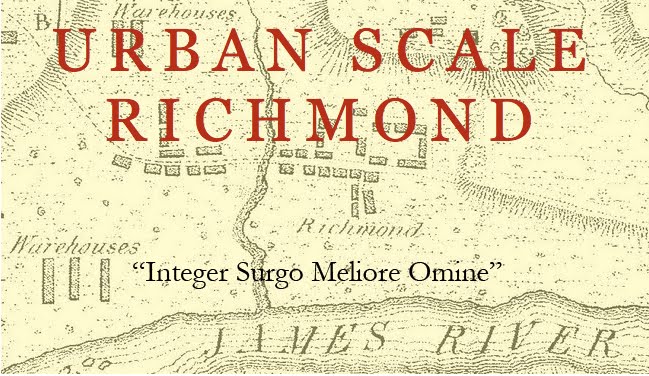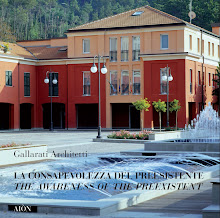Talkeetna, Alaska, has been many things: supply station and winter base for prospectors, miners, and trappers in the area around Cache Creek, a port for riverboat shipping, and a railroad depot on the Alaska Railroad midway between Anchorage and Fairbanks. It is located 85 miles above the sea at the head of shipping on the shallow Susitna River. Today it has attained new significance as the primary jumping-off point for climbing expeditions to the summit of Mount McKinley in the nearby Alaskan Range. The development of the town’s story is wrapped up with the transportation history of the remote Alaskan wilderness. It involves foot travel, water transportation, dog sled, horse, rail and airplane.
 |
Remarkable view on July 3 of the summit of Mt. McKinley, usually concealed by clouds.
|
 |
| Main Street looking west from the Town Park with Nagley's Store at center. |
A recent visit to the unincorporated town of Talkeetna (pop. 876) revealed remarkable continuity of form between the early Alaska railroad town and the tourist depot that it is today. The town is made up of a Main Street that extends from the station to the river, paralleled by Front Street to the north and First and Second streets to the south. It is crossed by streets named A, B, C, and D. Flooding and erosion have reduced the town by two blocks to the west, but what remains shows the kinship of Talkeetna with planned towns around the world. Information here is derived from exhibits at the Talkeetna Historical Society and the National Register form for the Talkeetna Historic District.
 |
| David Lawrence Cabin (c 1920) |
Prospectors arrived as early as 1896 with a gold rush in the area around the Susitna River. The tiny port of Talkeetna was established by the Alaska Commercial Company in 1910, soon after the discovery of gold on nearby Cache Creek in 1906. It served as a supply center for miners who spent the summers on their claims and the winters hunting and trapping. The supply center closed in 1912, but the town’s use as a home base by miners in the Yentna District lasted until the end of the mining era during World War II.
In 1916, the Alaskan Engineering Commission, a federal agency responsible for building a railway to open up the interior of Alaska to development, selected Talkeetna as the location for a construction headquarters, station, and post office. With the completion of the railroad in 1923 the town lost a significant section of its population, but its purpose as a supply center was sustained. From 1920 to 1932, the Alaska Road Commission maintained a road crew in Talkeetna, building and repairing 22 miles of wagon roads and nearly the same number of miles of sled road giving access from the depot to the back country all around.
 |
| Map from the National Register form for the Talkeetna Historic District [National Park Service] |
The AEC used its authority to plat a grid of eighty lots in 1918 and sold them to merchants, freighters, and miners. The town previously consisted of informal lots flanking a route running back from the river landing. Many occupants were able to establish “preference rights” to purchase approximately half of the lots since they had already made improvements to them. In 1920, the population included 53 men and 17 women. 19 of the men were miners, 5 were trappers, 7 worked for the railroad, and 22 were involved in commerce.
The main intersection and the commercial center (at least since the loss of the western end of town to erosion in the 1940s) is found where Main Street is crossed by D Street. One corner is occupied by a triangular park, probably established by the Alaskan Engineering Commission in 1918 as a site for the rail-related buildings. Such parks were commonly included in post Civil-War town developments in order to allow for additional railroad buildings and to impress visitors by ordering and ornamenting what would serve as the gateway to the town.
When the 30-foot-wide Talkeetna Village Airstrip opened in 1938, it was positioned immediately adjacent to the town as a continuation of D Street, so that airplanes could readily load supplies from the trains and take off directly over Main Street. This new transportation center may partially account in part for the importance of the intersection of D and Main streets.
 |
| Fairview Inn, Talkeetna, (1923), view from intersection of Main and D streets on July 3. |
Not until 1964 was Talkeetna connected by road with the outside world. The streets were unpaved and the buildings fronted directly onto the streets, probably with boardwalks in heavily traveled sections. A section of boardwalk has been maintained in front of Nagley’s Store. The rough and even primitive character of the edge between lot and street is what gives the town its peculiar historic atmosphere. Although the streets have been paved, the lack of sidewalks and presence of wildflowers and native shrubs give the sense of continuity in time and place.
 |
| Ole Dahl Cabin #1 (c 1918) |
 |
| Nagley's Store (1920/1945) |
Of the thirteen historic buildings built between the late 1910s and the 1930s, most are located along the Main Street. As a town with limited functions and restricted demographics, the number and variety of civic and other specialized buildings was limited. There was no school until 1936, when the Alaska Territory built a one-room school house (now the town’s museum). There was no church and the only public building for many years was the railroad station. The Fairview Inn, the only hotel, was built between 1920 and 1923. It stands across the street from Nagley’s Store, built by Horace Nagley out of reused parts brought in by barge in from an older supply station about 1920. It was relocated in 1945 from the lower part of town after it was threatened by erosion of the river bank.
 |
| The Frank Lee House (1917), known after 1940 as "the Talkeetna Roadhouse," a longtime headquarters for Mt. McKinley climbers, located on the corner of Main and C streets. |
 |
| Detail of logs at the David Lawrence Cabin |
All of the early buildings, other than the depot and the Fairview Inn, were built of logs. Many of these have v- and square-notched corners that are protected by boxed corner boards. A two-story, gable-front log house was built in 1917 on the corner of Main and C streets by Frank Lee, a river freight operator. At 21’ x 32’ feet, it is one of the largest. It was converted into an inn and restaurant (“the Road House”) in 1940. Other houses include the small and low-ceilinged (13’ x 20’) typical “trapper’s cabin” built by Ole Dahl about 1918 and the David Lawrence Cabin, which measures 15’ x 20,’ and the second Ole Dahl House of c 1920, which was built after his marriage and measures 20’ by 26.’ By the 1930s, houses continued to be built of log, but were supplemented by frame buildings like the school.












No comments:
Post a Comment